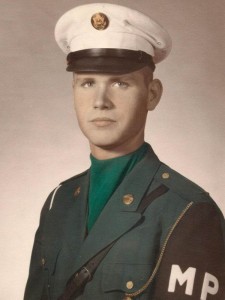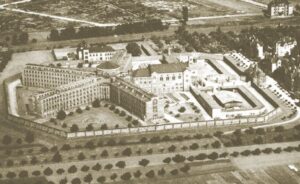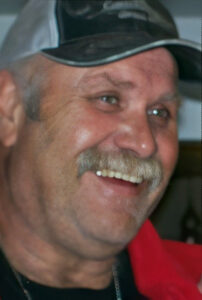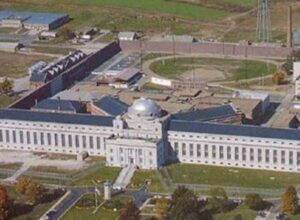
 My brother-in-law, LJ Cook was an MP in the Army from 1968 to 1971, which was the Vietnam Era. For a long time, that was all I knew about his time of service. Today, that has all changed. I think I thought of MPs as maybe handling the disobedient military personnel, maybe like the movie, “Stripes” or the show, “MASH,” but movies rarely tell the whole story on these things. LJ went through basic training in Fort Ord, located in the Monterey Bay area of California. Following his basic training, LJ was sent to MP school at Fort Gordon located southwest of Atlanta, Georgia. Following his MP training, LJ flew into Frankfort, Germany, and then on to Mannheim, Germany, where he would spend the remainder of his military service as an MP at the Mannheim Prison.
My brother-in-law, LJ Cook was an MP in the Army from 1968 to 1971, which was the Vietnam Era. For a long time, that was all I knew about his time of service. Today, that has all changed. I think I thought of MPs as maybe handling the disobedient military personnel, maybe like the movie, “Stripes” or the show, “MASH,” but movies rarely tell the whole story on these things. LJ went through basic training in Fort Ord, located in the Monterey Bay area of California. Following his basic training, LJ was sent to MP school at Fort Gordon located southwest of Atlanta, Georgia. Following his MP training, LJ flew into Frankfort, Germany, and then on to Mannheim, Germany, where he would spend the remainder of his military service as an MP at the Mannheim Prison.
Construction on Mannheim Prison was started in 1905 and it first opened for use in 1909. It was a Third Reich prison until after World War II. Then it was used for United States military purposes during the Vietnam War. The prison included a separate hospital building, which until 1945 was used to treat ill prisoners throughout the region. The prison was considered modern for the time, with each cell having running water with a toilet and a washbasin, central heating and electric light. As with all prisons in Third Reich Germany, Mannheim Prison was used to incarcerate standard criminal convicts as well as political prisoners.
LJ was a Maximum Confinement Section Chief during his time at Mannheim Prison. The correctional officers lived in the barracks on site during their off time. LJ was part of the 77th MP Company, which at that time was the biggest company in army. The prison also had two chapels, two mess halls, and it was a large enough place that LJ didn’t know everyone stationed there…even after three years. When an MP first arrives at Mannheim Prison, they are settled into the squad bay in the attic of the barracks. This is really temporary housing until they can be officially assigned. Most of the rooms in the main barracks (specifically for the Non-NCO personnel) have four men to a barracks. The NCOs had two men to a room. And the higher-ranking officers had a private room. Lynn’s highest rank was that of Acting E7, but his permanent rank was Seargent. He could have been given the permanent rank of E7, if he had wanted to re-enlist for six more years. He did not. He would have also been sent to Vietnam had he re-enlisted.
During his time at Mannheim Prison, LJ saw three or four prison riots, all of which the MPs squashed. The prisoners at Mannheim Prison were American GIs in prison for everything from being AWOL to murder. Of course, riots happened when the prisoners overpowered a guard. That seems like an unlikely possibility, but the prison, with four blocks, A, B, C, and D, with each block having 8 cells, each holding 30 to 40 prisoners. Cells were made of steel bars so, no privacy. A guard was sometimes in the cell with the men, and you just didn’t take a gun in there, on the off chance that a prisoner could take it from you. The guards were armed with night sticks, as their only weapon. During the riots, while LJ was there, no guards were killed, but there were a number of incidences in which guards were beaten. LJ was once hit in the head by a boot thrown at him by a prisoner. LJ had to hit the man with his night stick. In defending himself, LJ dislocated the man’s shoulder and broke his collar bone. Needless to say, the man never threw a boot at LJ again.
Another part of LJ’s job was to make arrangements for shipments of prisoners from Mannheim Prison to Leavenworth Prison, in northeastern Kansas. Leavenworth is now a medium security US penitentiary. LJ made eight trips across the Atlantic with shipments of prisoners. One onboard, LJ was in charge of everything on the plane. The prisoners were not handcuffed or otherwise restrained, and there were no bars or cages between prisoners and guards. Sometimes the whole plane was full of guards and prisoners. When the made fueling stops, the prisoners had to get off. The airports had to be notified upon landing so they could bring out extra security to prevent escape. The prisoners thought LJ was crazy. He told them that he would take action is they tried to escape, and that he was a bad shot. He said that while trying to “wound” escaping prisoners, but that he almost aways missed and hit the prisoner in the back of the head. Needless to say, LJ never lost a prisoner. After the guards transported prisoners, they got two weeks leave, so he would usually head home to Lovell, Wyoming for a home visit. The military license said that he had said “no time or mileage limitation.” That meant that he could go wherever he wanted, so if he was not going home, he might get a taxi to a train station, and then head out to wherever he wanted to see at the time. He also had a friend who was a warrant officer, who piloted a Huey Helicopter. On days off, they would jump in the Huey and go all over Europe and even northern Africa. The “normal work week” in the Army was a “twelve day” week. The men had three days on day shift 
 followed by 24 hours off. Then they had three days on swing shift followed by 24 hours off, and finally three days on night shift followed by 24 hours off. It gave them time to have some R and R every few days. The two weeks for leave were the normal 14 days. LJ was honorably discharged from the Army in 1971. His training would help him in his career as a Deputy Sheriff in Casper, Wyoming. I would like to thank my brother-in-law, LJ Cook for his service to his country. Today is LJ’s birthday. Happy birthday LJ!! Have a great day!! We love you!!
followed by 24 hours off. Then they had three days on swing shift followed by 24 hours off, and finally three days on night shift followed by 24 hours off. It gave them time to have some R and R every few days. The two weeks for leave were the normal 14 days. LJ was honorably discharged from the Army in 1971. His training would help him in his career as a Deputy Sheriff in Casper, Wyoming. I would like to thank my brother-in-law, LJ Cook for his service to his country. Today is LJ’s birthday. Happy birthday LJ!! Have a great day!! We love you!!


Leave a Reply